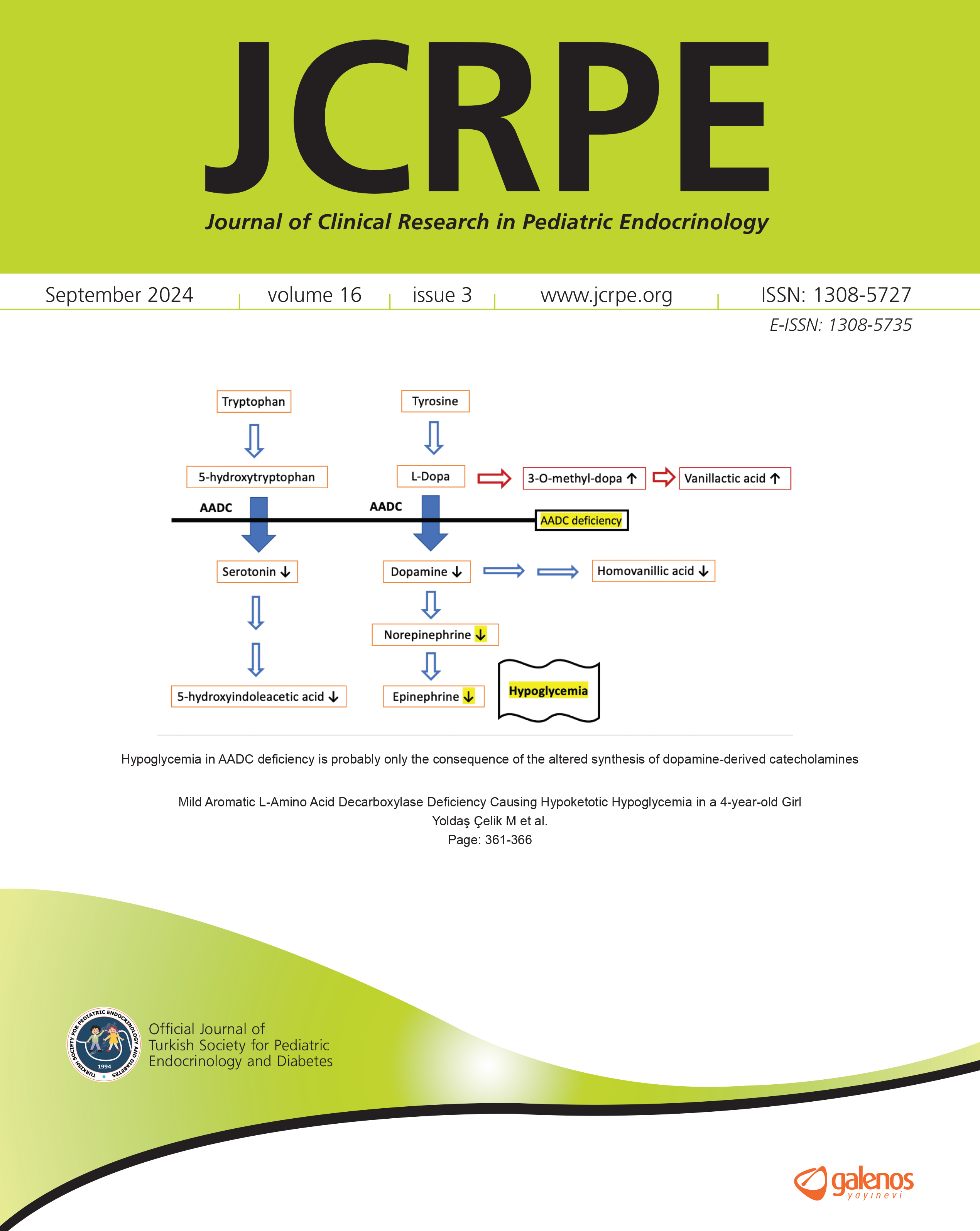Endocrine Disorders in Children with Primary Mitochondrial Diseases: Single-Center Experience
Esra Deniz PAPATYA ÇAKIR1, Melike ERSOY1, Nihan ÇAKIR BİÇER2, Asuman GEDİKBAŞI31University of Health Sciences, Bakırköy Dr. Sadi Konuk Education and Research Hospital, Depatment of Pediatric Endocrinology, MD, İSTANBUL2Acıbadem Mehmet Ali Aydınlar University, Faculty of Health Sciences, Department of Nutrition and Dietetics, PhD İSTANBUL
3Istanbul University Institute of Child Health, Department of Pediatric Basic Sciences Division of Medical Genetics, Istanbul University Faculty of Medicine Department of Pediatric Genetics MD, PhD İSTANBUL
INTRODUCTION: Endocrine abnormalities may represent the only clinical manifestation of primary mitochondrial disorders. This study aimed to evaluate the endocrinological characteristics of mitochondrial disease in our cohort.
METHODS: A total of twenty-six pediatric patients diagnosed with mitochondrial disease were categorized on the basis of their specific genetic abnormalities. The auxologic data, pubertal development, and, based on their clinical symptoms, hormonal profiles were obtained.
RESULTS: Twelve of the cohort of 26 patients (46%) were female. In 15 of the patients (57.6%), their mitochondrial disease (MD) was caused by nuclear DNA mutations (nDNA group). Four patients had Leigh syndrome, 2 patients had LHON syndrome, 2 patients had MELAS, and 1 patient had KSS clinical phenotype. The median age at diagnosis was 2.91 (0.5916.8) years, and the median age at first endocrinologic evaluation was 4.62 (1.2618) years. The mean height SDS was -1.34 ± 2.12, and the mean BMI SDS was -0.82 ± 1.96 for all patients. Of the 26 patients, 6 (23%) had a range of hormonal deficits. Ovarian insufficiency, central adrenal insufficiency, central hypothyroidism, diabetes mellitus, and critical illness-related adrenal insufficiency were all observed. Three of the patients were initially monitored in the endocrine clinic for hormone deficiencies but it was later determined that the hormonal abnormalities were caused by underlying mitochondrial disease.
DISCUSSION AND CONCLUSION: Individuals diagnosed with mitochondrial disease, particularly those with specific genetic abnormalities, are considered a high-risk group for developing hormonal deficits. Endocrine diseases could be one of the primary mitochondrial disorders early warning symptoms.
Manuscript Language: English



























